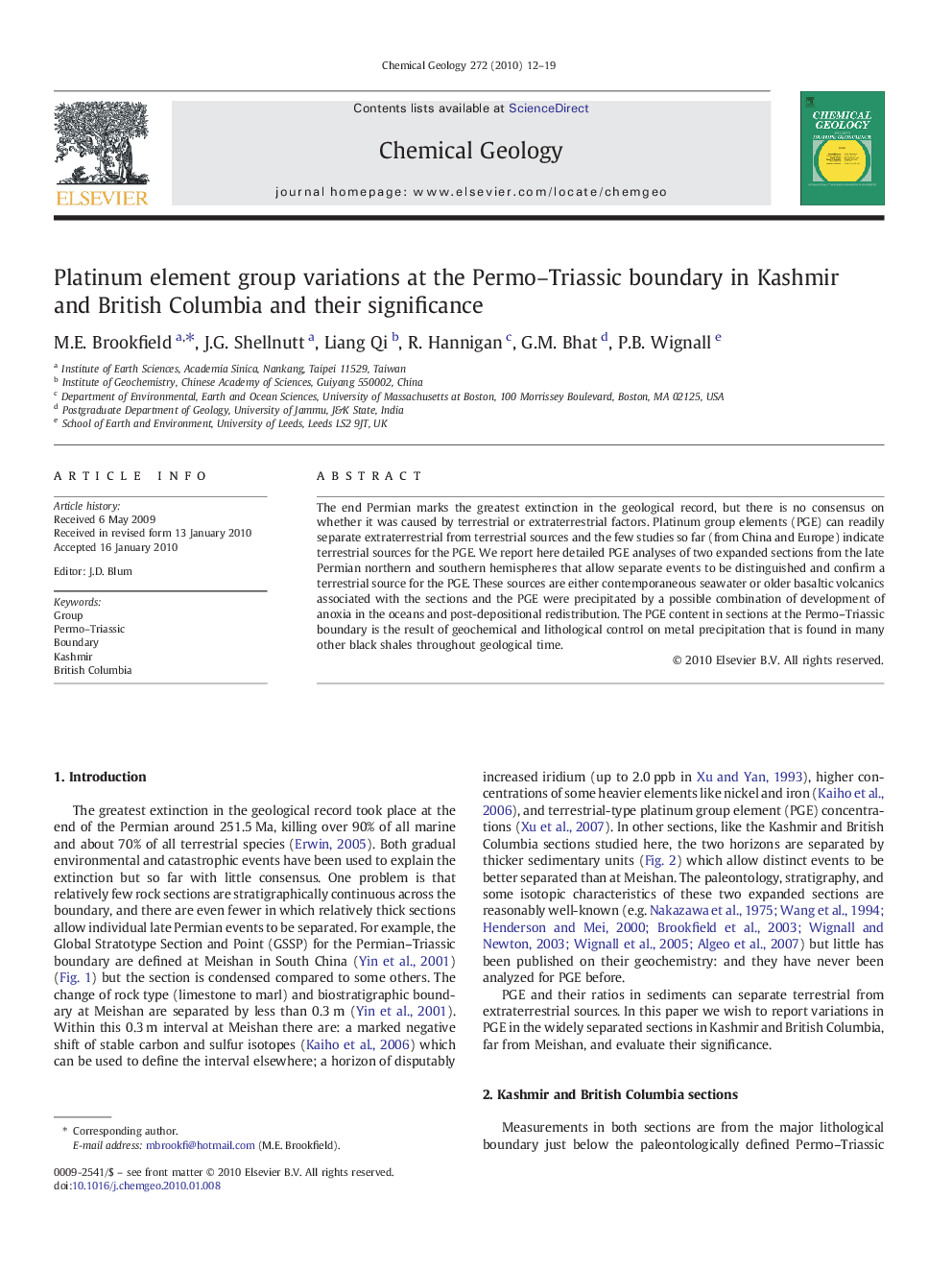| Article ID | Journal | Published Year | Pages | File Type |
|---|---|---|---|---|
| 4700087 | Chemical Geology | 2010 | 8 Pages |
Abstract
The end Permian marks the greatest extinction in the geological record, but there is no consensus on whether it was caused by terrestrial or extraterrestrial factors. Platinum group elements (PGE) can readily separate extraterrestrial from terrestrial sources and the few studies so far (from China and Europe) indicate terrestrial sources for the PGE. We report here detailed PGE analyses of two expanded sections from the late Permian northern and southern hemispheres that allow separate events to be distinguished and confirm a terrestrial source for the PGE. These sources are either contemporaneous seawater or older basaltic volcanics associated with the sections and the PGE were precipitated by a possible combination of development of anoxia in the oceans and post-depositional redistribution. The PGE content in sections at the Permo-Triassic boundary is the result of geochemical and lithological control on metal precipitation that is found in many other black shales throughout geological time.
Related Topics
Physical Sciences and Engineering
Earth and Planetary Sciences
Geochemistry and Petrology
Authors
M.E. Brookfield, J.G. Shellnutt, Liang Qi, R. Hannigan, G.M. Bhat, P.B. Wignall,
